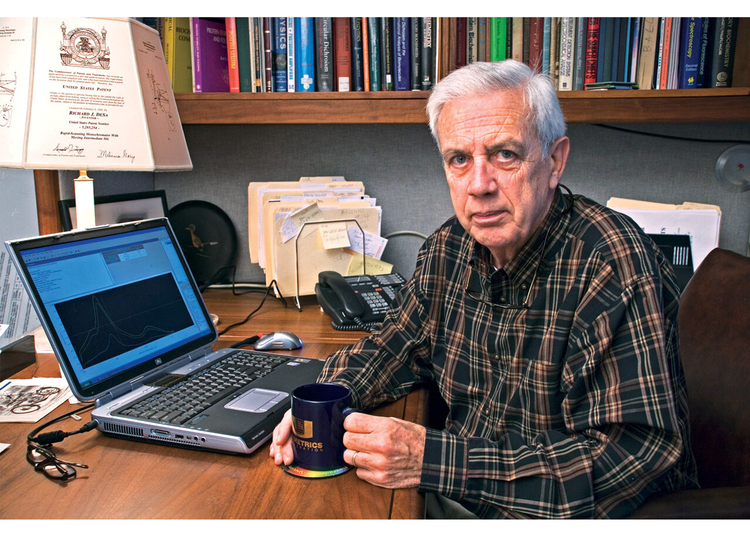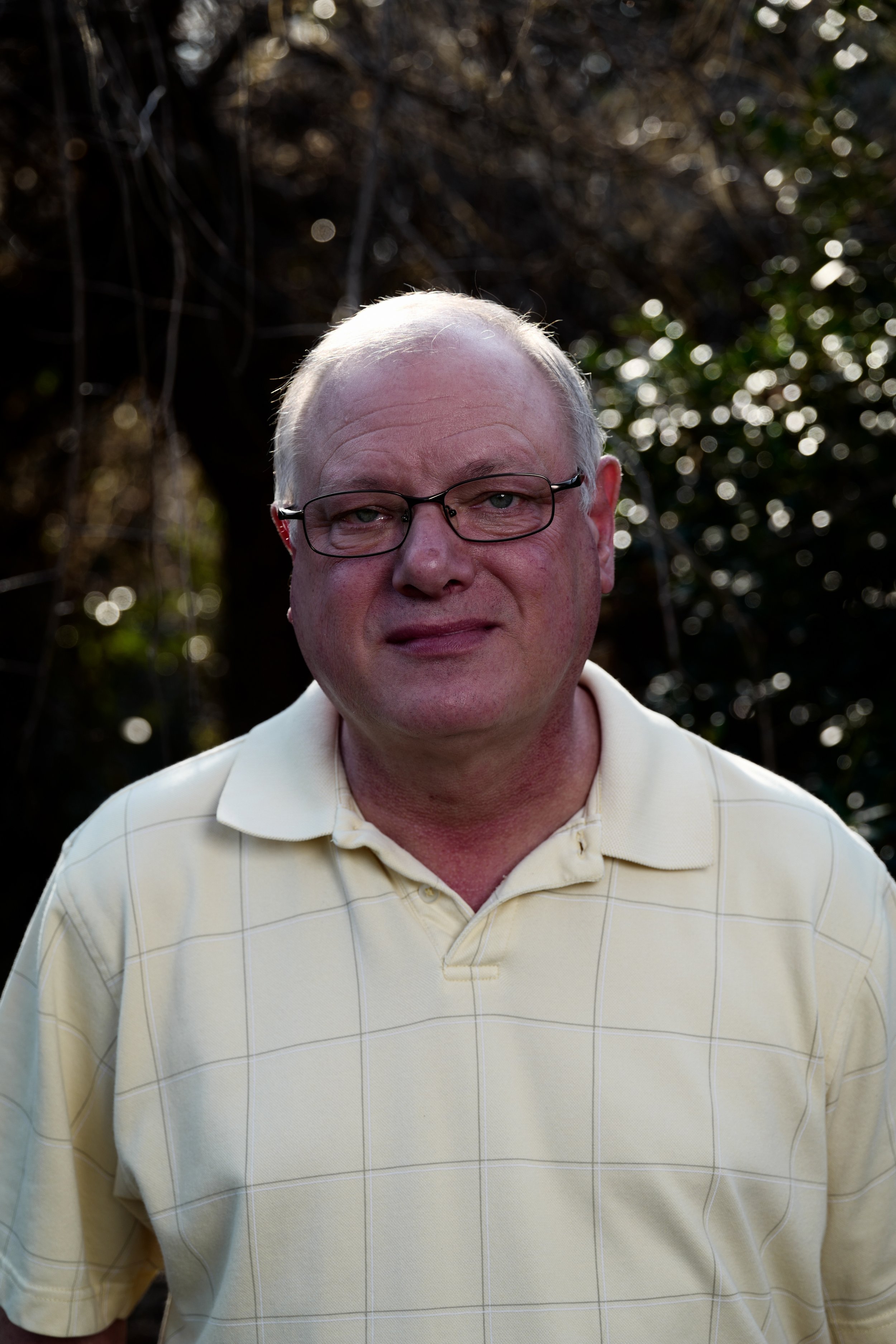A Biased View of Circular Dichroism
A Biased View of Circular Dichroism
Blog Article
Uv/vis Can Be Fun For Everyone
Table of ContentsUnknown Facts About SpectrophotometersThe Facts About Uv/vis UncoveredThe Ultimate Guide To Uv/visSome Known Details About Uv/vis/nir The Best Strategy To Use For SpectrophotometersWhat Does Circular Dichroism Do?5 Simple Techniques For Uv/vis/nirUv/vis/nir for BeginnersFascination About Circularly Polarized LuminescenceCircular Dichroism Fundamentals ExplainedThe Buzz on Circular DichroismThe Best Guide To Uv/visThe Ultimate Guide To Circularly Polarized Luminescence
It is then scanned through the sample and the referral options. Fractions of the incident wavelengths are sent through, or shown from, the sample and the referral. Electronic circuits convert the relative currents into direct transmission percentages and/or absorbance/concentration values.The transmission of a recommendation compound is set as a baseline (information) worth, so the transmission of all other substances are taped relative to the preliminary "zeroed" compound. The spectrophotometer then transforms the transmission ratio into 'absorbency', the concentration of specific elements of the test sample relative to the preliminary substance.
Considering that samples in these applications are not readily available in big amounts, they are particularly matched to being evaluated in this non-destructive strategy. In addition, valuable sample can be conserved by using a micro-volume platform where as low as 1u, L of sample is needed for complete analyses. A quick explanation of the procedure of spectrophotometry includes comparing the absorbency of a blank sample that does not contain a colored substance to a sample that consists of a colored compound.
A Biased View of Spectrophotometers
In biochemical experiments, a chemical and/or physical property is selected and the procedure that is used is specific to that home in order to derive more details about the sample, such as the quantity, purity, enzyme activity, etc. Spectrophotometry can be utilized for a variety of techniques such as figuring out ideal wavelength absorbance of samples, figuring out optimum p, H for absorbance of samples, figuring out concentrations of unidentified samples, and figuring out the p, Ka of various samples.: 21119 Spectrophotometry is also a handy procedure for protein filtration and can also be used as an approach to create optical assays of a compound.
It is possible to understand the concentrations of a two element mix utilizing the absorption spectra of the standard solutions of each element. To do this, it is required to know the extinction coefficient of this mix at 2 wave lengths and the termination coefficients of options which contain the recognized weights of the 2 parts.

Spectrophotometers Can Be Fun For Anyone
Area. The concentration of a protein can be estimated by determining the OD at 280 nm due to the presence of tryptophan, tyrosine and phenylalanine.
Nucleic acid contamination can likewise interfere. This technique needs a spectrophotometer capable of determining in the UV region with quartz cuvettes.: 135 Ultraviolet-visible (UV-vis) spectroscopy includes energy levels that delight electronic transitions. Absorption of UV-vis light delights particles that remain in ground-states to their excited-states. Noticeable region 400700 nm spectrophotometry is used thoroughly in colorimetry science.
These curves can be used to test a brand-new batch of colorant to examine if it makes a match to specs, e
Traditional visible standard spectrophotometers area not detect if find colorant or the base material has fluorescence. This can make it difficult to handle color concerns if for example one or more of the printing inks is fluorescent. There are two major setups for visual spectrum spectrophotometers, d/8 (round) and 0/45.
Researchers utilize this instrument to measure the amount of substances in a sample. In the case of printing measurements 2 alternative settings are frequently utilized- without/with uv filter to manage better the effect of uv brighteners within the paper stock.
Uv/vis/nir Things To Know Before You Get This
Some applications require little volume measurements which can be performed with micro-volume platforms. As explained in the applications area, spectrophotometry can be utilized in both qualitative and quantitative analysis of DNA, RNA, and proteins. Qualitative analysis can be utilized and spectrophotometers are utilized to tape-record spectra of compounds by scanning broad wavelength areas to determine the absorbance residential or commercial properties (the intensity of the color) of the compound at each wavelength.

Unknown Facts About Spectrophotometers
One major aspect is the kind of photosensors that are available for various spectral areas, but infrared measurement is also difficult because virtually everything produces IR as thermal radiation, particularly at wavelengths beyond about 5 m. Another problem is that many materials such as glass and plastic absorb infrared, making it incompatible as an optical medium.
Samples for IR spectrophotometry may be smeared between two discs of potassium bromide or ground with potassium bromide and pressed into a pellet. Where liquid solutions are to be determined, insoluble silver chloride is utilized to build the cell. Spectroradiometers, which run almost like the noticeable region spectrophotometers, are created to determine the spectral density of illuminants. Retrieved Dec 23, 2018. Basic Laboratory Methods for Biochemistry and Biotechnology (2nd ed.). The vital guide to analytical chemistry.
Chichester, NY: Wiley. pp. 1617. ISBN 9780471974123. OCLC 36543293. Ninfa AJ, Ballou DP (2004 ). Essential lab approaches for biochemistry and biotechnology. Hoboken: Wiley. p. 66. ISBN 9781891786006. OCLC 633862582. Rendina G (1976 ). Philadelphia, PA: W. B. Saunders Company. pp. 46-55. ISBN 0721675506. OCLC 147990. Oke, J. B.; Gunn, J. E.
Circular Dichroism Fundamentals Explained
"Secondary basic stars for absolute spectrophotometry". The Astrophysical Journal. 266: 713. Bibcode:1983 Ap, J..266..713 O. doi:10. 1086/160817. Ishani, G (2006 ). "The first commercial UV-vis spectrophotometer". p. 100. Retrieved Dec 23, 2018. Simoni, RD; Hill, RL; Vaughan, M; Tabor, H (Dec 5, 2003). "A Timeless Instrument: The Beckman DU Spectrophotometer and Its Developer, Arnold O.
278 (49 ): e1. doi:. ISSN 1083-351X. Beckman, A. O.; Gallaway, W. S.; Kaye, W.; Ulrich, W. F. (March 1977). "History of spectrophotometry at Beckman Instruments, Inc". Analytical Chemistry. 49 (3 ): 280A300A. doi:10. 1021/ac50011a001. "Hewlett Packard: Substance Recognition with HP 8450 A UV Visible Spectrophotometer". Analytical Chemistry. 51 (12 ): 1188A1189A. 1979-10-01.
Ninfa AJ, Ballou DP, Benore M (2015 ). Fundamental Laboratory Approaches for Biochemistry and Biotechnology (3, rev. ed.). UV/Vis/NIR. Lab Devices.
Circularly Polarized Luminescence Things To Know Before You Buy
Retrieved Jul 4, 2018. Trumbo, Toni A.; Schultz, Emeric; Borland, Michael G.; Pugh, Michael Eugene (April 27, 2013). "Applied Spectrophotometry: Analysis of a Biochemical Mix". Biochemistry and Molecular Biology Education. 41 (4 ): 24250. doi:10. 1002/bmb. 20694. PMID 23625877. (PDF). www. mt.com. Mettler-Toledo AG, Analytical. 2016. Recovered Dec 23, 2018. Cortez, C.; Szepaniuk, A.; Gomes da Silva, L.
"Checking Out Proteins Purification Strategies Animations as Tools for the Biochemistry Mentor". Journal of Biochemistry Education. 8 (2 ): 12. doi:. Garrett RH, Grisham CM (2013 ). Biochemistry. Belmont, CA: Cengage. p. 106. ISBN 978-1133106296. OCLC 801650341. Holiday, Ensor Roslyn (May 27, 1936). "Spectrophotometry of proteins". Biochemical Journal. 30 (10 ): 17951803. doi:10. 1042/bj0301795.
PMID 16746224. Hermannsson, Ptur G.; Vannahme, Christoph; Smith, Cameron L. C.; Srensen, Kristian T.; Kristensen, Anders (2015 ). "Refractive index dispersion noticing utilizing a variety of photonic crystal resonant reflectors". Applied Physics Letters. 107 (6 ): 061101. Bibcode:2015 Ap, Ph, L. 107f1101H. doi:10. 1063/1. 4928548. S2CID 62897708. Mavrodineanu R, Schultz JI, Menis O, eds.
8 Easy Facts About Uv/vis/nir Shown
U.S. Department of Commerce National Bureau of Standards special publication; 378. Washington, D.C.: U.S. National this link Bureau of Standards. p. 2. OCLC 920079.
The procedure starts with a controlled light that brightens the evaluated sample. When it comes to reflection, as this light interacts with the sample, some is soaked up or released. The released light travels to the detector, which is evaluated, quantified, and provided as industry-standard color scales and indices.
All terms are assessed over the noticeable spectrum from 400 to 700 nm. In the case of transmission, when the light engages with the sample, it is either taken in, reflected, or transferred.
The smart Trick of Uv/vis/nir That Nobody is Discussing
Examples consist of APHA (American Public Health Association) for watercolor and pureness analysis, ASTM D1500 for petrochemical color analysis, edible oil indices utilized in food, and color analyses of beverages. The streamlined math looks like this:. Where T is the transmission coefficient. All terms are assessed over the visible spectrum from 400 to 700 nm.
Image Credit: Matej Kastelic/ Dr. Arnold J. Beckman and his coworkers at the National Technologies Laboratories initially developed the spectrophotometer in 1940. In 1935 Beckman founded the company, and the discovery of the spectrophotometer was their most ground-breaking innovation. Dr. Bruce Merrifield, a Nobel prize-winning biochemist, mentioned that the development of the spectrophotometer was "probably the most important instrument ever established towards the advancement of bioscience." Before the discovery of the spectrophotometer, chemical analyses took weeks to finish, with 25% precision.
The 6-Second Trick For Circularly Polarized Luminescence
Over time, researchers kept enhancing the spectrophotometer style to improve its efficiency. The UV capabilities of the design B spectrophotometer were enhanced by changing the glass prism with a quartz prism.
Generally, a spectrophotometer is made up of two instruments, particularly, a spectrometer and a photometer. A fundamental spectrophotometer contains a light source, a monochromator, a collimator for straight light beam transmission, a cuvette to place a sample, and a photoelectric detector.
Spectrophotometers Things To Know Before You Get This
There are different types of spectrophotometers in numerous sizes and shapes, each with its own purpose or functionality. A spectrophotometer identifies how much light is reflected by chemical components. UV/Vis/NIR. It measures the difference in light strength based on the overall quantity of light presented to a sample and the quantity of beam that passes through the sample option
A spectrophotometer is used to figure out the concentration of both colorless and colored solutes in a solution. This instrument is used to determine the rate of a response.
Report this page